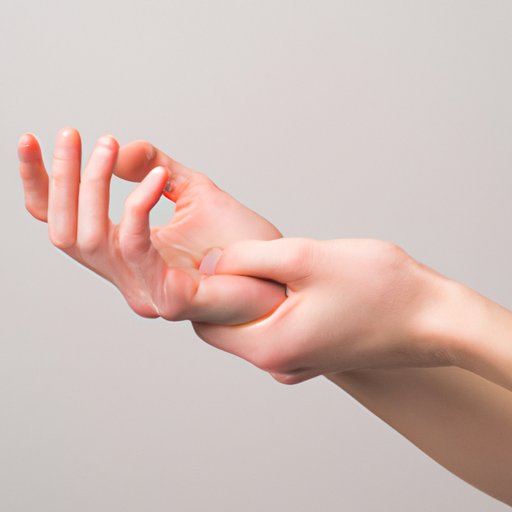
I. Introduction
Carpal tunnel syndrome is a common condition that affects many people, with symptoms ranging from mild discomfort to severe pain. It occurs when the median nerve, which runs from the forearm to the hand, becomes compressed within the carpal tunnel, a narrow passageway in the wrist. Symptoms may include numbness, tingling, and weakness in the affected hand and wrist. In this article, we will explore different methods to help alleviate carpal tunnel symptoms.
II. Stretches and exercises
Stretching and exercising the affected area is crucial to relieving carpal tunnel symptoms. Regular stretching can help improve flexibility and circulation, reducing pressure on the median nerve. Some exercises may include wrist flexor and extensor stretches, wrist circles, and finger extensions. It is important to perform these exercises safely and effectively, and to avoid overexerting the affected area, which may exacerbate symptoms. Consulting a physical therapist may be helpful in developing a personalized exercise plan.
III. Ergonomic advice
The environment where we work or do other activities may contribute to carpal tunnel symptoms. Certain ergonomic adjustments can help reduce strain on the wrists, such as using an ergonomic keyboard or mouse, adjusting the height of desks and chairs, and taking frequent breaks to stretch and rest the hands. It is important to make sure that the workstation or home setup promotes good posture and reduces stress on the wrists.
IV. Nutritional guidance
What we eat may also play a role in carpal tunnel symptoms. Foods that promote joint and muscle health, such as fatty fish, nuts, and whole grains, are recommended. Foods to avoid may include those with high levels of sugar and refined carbohydrates, as they may contribute to inflammation and worsen symptoms. Vitamin B6 and omega-3 fatty acid supplements may also be beneficial, but it is important to consult a healthcare provider before taking any supplements.
V. Alternative therapies
Alternative therapies may provide additional relief for carpal tunnel symptoms. Acupuncture and chiropractic care may help alleviate pain and improve circulation. It is important to find a qualified and experienced practitioner when considering alternative therapies, and to discuss any potential risks with a healthcare provider.
VI. Product recommendations
Many products on the market are designed to help alleviate carpal tunnel symptoms. Wrist splints may provide support and reduce pressure on the median nerve. Ergonomic keyboards and mice may also help reduce strain on the wrists. Different products may be recommended depending on individual symptoms, and it is important to discuss with a healthcare provider before purchasing any products.
VII. Medical interventions
In severe cases, surgery may be necessary to relieve carpal tunnel symptoms. The most common surgical procedure is carpal tunnel release, which involves cutting the ligament that forms the roof of the carpal tunnel to relieve pressure on the median nerve. Recovery time may vary, but it is important to follow post-surgery instructions from a healthcare provider and to attend follow-up appointments.
VIII. Conclusion
Carpal tunnel syndrome can be a debilitating condition, but there are many methods to help alleviate symptoms. It is important to seek relief and medical advice if needed, and to implement certain lifestyle changes to promote hand and wrist health.





